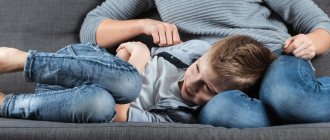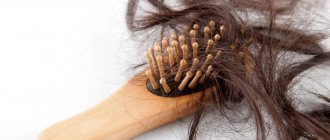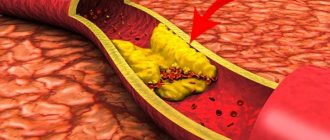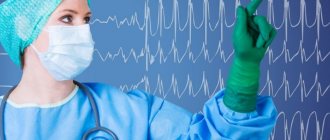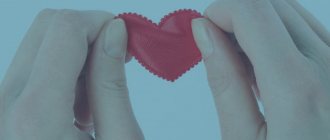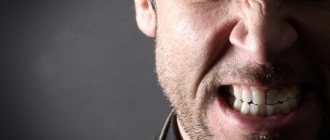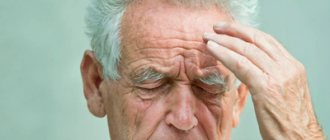Mental disorders in childhood are now not such a rare occurrence. Despite the development of medicine in general and psychiatry in particular, the number of patients with developmental features of the autism spectrum, schizophrenia and other diseases is constantly increasing.
Atypical autism is less common in children, but these statistics continue to grow. It was first identified as a separate disease in ICD-10. Previously, the concept of “autism” was used as a sign of schizophrenic disorders, psychoses, and mental retardation. This medical term has already thoroughly entered our lexicon, but not everyone knows how serious this disease is. However, the fact that a child suffering from it is considered disabled indicates the seriousness of the diagnosis.
Autism concept
Simply put, this is loneliness. The patient loses the ability to communicate with people and interact with the world around him in general. He withdraws into himself, into his own dimension, where there is no place for anyone else. From the outside it looks like a reluctance to communicate with anyone, but in fact, autistic people simply do not know how to do this.
From a physiological point of view, this is a violation of the perception of signals coming through auditory, visual, tactile and other receptors. They either do not completely reach the necessary think tanks, or do so incompletely. Accordingly, the reaction to current events changes.
Autism, or more accurately, autism spectrum disorder, is a complex developmental disorder that usually manifests itself at an early age. It is caused by pathology of the functioning of the nervous system.
Symptoms
Atypical autism is more difficult to identify than its classic form, so the diagnosis is often delayed. Missed onset of the disease and late treatment has a negative impact on further results.
The most surprising and at the same time confusing factor is the huge variety and individuality of symptoms.
Common features of the disease are disturbances in social inclusion, communication and interaction with others.
At home, it is quite difficult to recognize atypical autism in children. Most often, relatives attribute certain oddities and unusual behavior to age-related changes or temperamental characteristics. They are in no hurry to contact a specialist with such problems, thereby missing the initial stage of the disease.
The distinctive factors of atypical childhood autism are:
- Age limits. This type of disorder has the peculiarity of developing not in early childhood, but at a later date - 3 years, 6–10 years, or adolescence. These are those periods of a child’s life when he experiences stress about adapting to a new team, the need to communicate with strangers, and building relationships.
- Socialization. Despite the fact that the patient is completely dependent on his parents, he reacts poorly to them. The baby may not worry about the absence of his mother or, on the contrary, show concern, and behave coldly and unkindly in front of her.
- Speech. It is either absent or reduced to the use of individual words, or, in extreme cases, phrases. Constructing sentences is too difficult a task.
- Emotional breakdown. During normal activity, absolute or selective non-contact may be observed. Intense external stimuli - bright lights, loud sounds - cause fear. Uncharacteristic, unpredictable reactions to events may occur.
- Behavior. There is a negative reaction to touch. Such children do not strive to copy adults or peers and prefer loneliness.
With normal physical development, mental retardation is most often observed.
Assessing the level of intellectual abilities can be difficult, since a diagnosis made at an early age can be corrected.
Diagnosis worsens due to disorders of the speech apparatus and communication skills. During tests, the child, as a rule, knows the solution to the problem, but does not say it.
Treatment results at the Osteopathy and Health Center
You should contact a specialist as soon as parents have the first suspicions, otherwise the overall development of the child will be at risk. In order to effectively eliminate logoneurosis in children, it is necessary to influence its causes. The Center for Osteopathy and Health has developed effective methods for correcting verbal functions in children.
Already at the very beginning of the course of treatment in patients:
- The dynamics of the cerebrospinal fluid is restored.
- Intracranial pressure is normalized.
- Headaches stop.
- The muscles relax.
- The consequences of birth injuries are mitigated.
- General health stabilizes.
- Psychomotor development improves.
- The general structure of speech is formed.
Patient reviews
| 04.05.2019 I thank Natalia Gennadievna for her work and work. Our child did not speak, but after seeing the doctor everything changed, we are already talking and enjoying every visit to the doctor. Vova is looking forward to coming to the doctor because he is feeling better! Volodya Kosteniuk's mother. |
| 05/2/2018 Heartfelt gratitude to Natalya Gennadievna Lazareva! I applied 2 years ago. My son Kirill Romanov hardly spoke at 4.5, the delay was crazy. Development, Behavioral problems. Thanks to Natalya Gennadievna, normative speech appeared and in fact we caught up with our peers in development. Thanks a lot! |
| 15.05.2018 For many years I turned to Natalya Gennadievna with problems in our family. First, the eldest son Igor (stuttering since birth) is now almost 30 years old and 21 of them have been healthy, because we were lucky to get to N. G. Lazareva at the age of 9. Now the son has brought his daughter (she is 1 year and 10 months old) with an orthopedic problem. His youngest son Nikita, born in 2002. I brought him with a broken leg in 2021, he is an athlete and broke his leg on the football field, but the main problem was with the asymmetry of his face and teeth! In a very short course of treatment, we developed his leg here and did without braces. There was axial asymmetry on two teeth, a shift to the left. Miracles and nothing more, but Nikita looks now at 16 years old, a Hollywood smile and straight teeth! Thank you very much for healthy children! Zhulieva Elena Sergeevna. |
Answers to frequently asked questions
How does osteopathy improve speech development? When a child is diagnosed with logoneurosis and there is a delay in speech development, osteopathy becomes one of the most effective treatment methods. His psycho-emotional sphere quickly returns to normal. He begins to learn grammatical rules, remembers new words better, expands his vocabulary, and uses expanded phrases and comparisons.
What additional therapy methods are used at the Osteopathy and Health Center? For speech delay, reflexology and pharmacopuncture are widely used. Treatment of stuttering with acupuncture is of great benefit. Physiotherapy is no less important for improving speech. As a result of their use, the child’s migraines quickly disappear, his overall health stabilizes and his sleep improves. He begins to understand well what he hears and more willingly enters into conversation.
Is treatment possible after 25 years? Treatment of logoneurosis in adult patients is more difficult. That's why it's so important to take action in a timely manner. Nevertheless, the specialists of our Center manage to restore the organization, smoothness and rhythm of speech, normalize the state of the nervous system and provide effective treatment for stuttering in the patient.
Features of the course of the disease
Children with autism have a very difficult time mastering everyday skills that everyone takes for granted. Eating normally is difficult. They are extremely selective and picky when it comes to food. For example, a child eats only semolina porridge, and no variety of dishes will convince him to try something else. If there is no porridge, he will starve. In the end, his mother will cook it and feed him.
The toilet is another problem. Children do not see the point of going to the potty, and cannot understand why adults persistently strive for this. This happens because from early childhood they have a very weak (or no) reaction to such stimuli as:
- cold;
- wet diapers
- hunger;
- unpleasant odors;
- touch.
In play activities, toys are most often completely ignored. Instead, the child prefers to use household items. There is usually no plot of the game; only stereotypical movements are observed, such as spinning in the hands or moving from place to place. An autistic person may sniff, touch, lick a new object for a long time, move it in front of his eyes, or crawl on his knees around it.
Due to speech impairment, it is almost impossible to conduct a dialogue with the patient; he simply will not support it. However, the baby can remember fairly long phrases from films and television shows and reproduce them accurately. When you contact him with a question, he may repeat it or not respond at all.
Microcurrent reflexology for children and additional classes
The medical center has a very large list of additional services for psychological, pedagogical and medical rehabilitation of children with developmental disabilities. For a fairly reasonable fee, you can take from 10 to 15 lessons from a speech therapist, speech pathologist, speech therapy massage, taping, work with a psychologist, neuropsychologist, and even get a therapeutic massage or visit an osteopath. As far as I know, for the last few years you can get an EEG here, but it’s better to sign up in advance. In fact, you need to make an appointment with all specialists at the same time you book your reflexology course. I do this in 3-4 months, because... I need my specialist, who has been guiding us since the first year, and a rented apartment next to the rehabilitation center. If you book accommodation shortly before arrival, you can be left without it or live a few stops from the medical center in some “bedbug infestation”.
What are the additional correctional classes aimed at and are they any good? I’ll say right away that there is always benefit! They enhance the effect of current treatment. I think it has long been no secret for mothers that complex effects are always a prerogative.
The speech therapist works on all the deficiencies in the child’s speech: expands the vocabulary, introduces or corrects problematic sounds, and includes articulatory gymnastics in his classes. He can do logomassage to improve the condition of the articulatory muscles or conduct several taping sessions to get rid of drooling and improve swallowing and chewing food. We did a probe massage. He helped Anya increase the muscle tone of her articulatory apparatus. At least she understood how to move her tongue and felt it. Taping over two courses of 10 sessions completely eliminated her drooling. Diction has improved. She stopped “catching flies” with her mouth and finally closed it.
A psychologist helps a child develop mental functions: memory, attention, thinking, imagination. The lesson lasts 30 minutes (the same as with a speech therapist). Everything takes place in a playful way. For older children, tasks are done to correct their writing, reading, and counting skills. Anya liked going to the psychologist. She happily completed interesting tasks and looked forward to the next day.
A defectologist pays more attention to general development - to understanding the world around him, broadening his horizons, establishing cause-and-effect relationships, eliminating certain behavioral characteristics or correcting them. He focuses on studying the most basic concepts about objects and phenomena.
I haven't used the service, but I know that a couple of years ago they got an ABA therapist for children with ASD. I saw different children coming in, and, I want to say, it was quite quiet in the office.
All teachers give their recommendations regarding further activities with the child at home. I was advised a lot of useful aids, using which Anya and I could independently correct her violations at home throughout the year. I also learned many useful techniques for conducting the lesson itself and using some teaching materials.
The massage therapists here are strong - they work well on all problem areas. Your massage appointment is made by your reflexologist. He also determines what type is needed. We are always prescribed a massage of the collar area and hands. Some people are given a common one. Many children fall asleep, but there are also those who scream. Our massage lasted no more than 20 minutes.
The osteopath helped us establish communication with the potty. This happened in the 3rd year at 4 years old. Before this, this service did not exist in the center. Three sessions, and Anya not only understood why this device was needed, but also began to actively use it even at night. Upon arrival home, she switched to a shared toilet. A session with an osteopath lasts about 40 minutes. The children are screaming, although the doctor is not doing anything painful. Probably, they are more uncomfortable with the physical manipulations and touches of a stranger. This is not surprising - almost all children have sensory problems.
By the way, the time of procedures and classes is scheduled by week. One week you have one schedule, the second - the second, the third - everything has changed again. Visiting times are not always close to each other. Windows often appear. You can relax, take a walk, eat, etc. Of course, walking back and forth three times a day is tiring, but this also has its advantages - the day goes by quickly! If your child takes a nap during the day, ask that activities be scheduled in the morning and afternoon. The receptionists make concessions and try to create a comfortable schedule for everyone.
Reasons for development
The main factor in the development of early autism is considered to be a deficiency of the central nervous system. The reasons why it occurs are as follows:
- genetic predisposition;
- chromosomal abnormalities;
- organic lesions of the central nervous system in pathologies of pregnancy and childbirth;
- premature schizophrenic process;
- some congenital diseases.
Modern medicine already knows about thirty similar nuances. Therefore, pathologies such as mental retardation and autism spectrum disorders are becoming more common.
The likelihood of having a child with special psychological needs exists in every family.
The actions of various factors or their combination introduce individual characteristics into each patient. The character and type of personality also leaves an imprint on the course of the disease. Even with similar symptoms in the same situations, different children may behave differently.
Childhood catatonic autism
A severe form of the disorder is expressed by catatonic agitation. It manifests itself most often by the following actions:
- monotonous walking, turning into running;
- scream;
- laughter, crying;
- prolonged stereotypic movements;
- impulsiveness expressed in unexpected actions.
Motor excitation suppresses instinctive activity and is expressed by negativism, attacks of numbness or waxy flexibility. Attempts at physical influence provoke resistance, hypertonicity and a persistent desire to avoid touching.
The attack may be accompanied by the pronunciation of individual words, syllables, and sounds. At the same time, the timbre of the voice and volume are constantly changing: the child either whispers something unintelligible, then suddenly suddenly starts screaming. There is a stereotypical repetition of phrases, either clear or drawn out and blurred.
What is microcurrent reflexology for children and the MEX device?
I looked for many rehabilitation methods and read many positive reviews about microcurrent reflexology for children at the rehabilitation center in Samara. It was decided to go and personally try out the services offered. Why this city? Because this is the first medical center where they began to use the MEKS device in 1994, developed according to the original method of Natalia Alekseevna and Alexey Petrovich Gavrilovs (ideologists of the project, developers of the equipment itself and the basic method of treatment). It is approved by the Ministry of Health and Social Development of the Russian Federation.
MEX is a medical hardware complex with modern software that helps in determining the indicators of the child’s neurological status and creating an individual treatment plan. The treatment itself involves the impact of microdoses of current on problem areas of the brain, structures and systems of the human body that for some reason do not work. It is based on the teachings of acupuncture and electrotherapy. Certain biologically active points are stimulated, some of which coincide with the direction of blood circulation. In this case, the points are not destroyed, as with acupuncture, and therefore the possibility of repeated exposure remains. They are selected individually, as well as the time of exposure to them. As a rule, during one session, the impact can occur on different groups of them: on the body and head, on triggers of spastic muscles, on neuroreflex zones associated with the spinal cord, etc. Currents harmonize the functioning of neuromuscular synapses and establish a balance between the processes of excitation and inhibition. In general, the functioning of the central nervous system is being restored in many respects.
Through cutaneous electrodes, small doses of current are applied (it is not painful) to selected areas of the body. The electrodes are connected to a generator of ultra-small electrical pulses. All indicators are displayed on the computer screen in real time. Children tolerate the procedure well, but let's talk about everything point by point.
Establishing diagnosis
The sooner a disorder is identified, the faster the correct approach to it will be found, and an algorithm of actions will be built that will lead to rapprochement and establishment of contact. First of all, this is the task of parents.
Children a priori cannot be the same, but even with a discount for personality traits or upbringing, they must fit into generally accepted norms of development.
By the end of the first year of life, a child without autistic disorders should master the following basic skills:
- know your name and respond to it;
- communicate with others;
- react emotionally to various situations.
Modern diagnostic methods allow parents, even before the birth of a child, to examine a panel of genes responsible for mental retardation and the development of autistic disorders. The genetic panel makes it possible to both accurately confirm the diagnosis and further detailed examination of the patient.
If parents have not done such tests, but begin to notice autistic manifestations, medical help is clearly needed. The first authority they should contact is a child psychologist. If a negative trend is confirmed, he gives a referral to a neurologist or psychiatrist.
General detailed diagnostics are carried out in the following ways:
- conversation, observation of the child;
- tests, questionnaires;
- game, construction;
- MRI, CT scan of the brain;
- study of the autonomic and cardiovascular systems.
Children with autism may not respond to sound stimuli for a long time. For this reason, parents begin to suspect hearing problems. At the initial stage of diagnosis, it is important to make sure that there are no problems with auditory perception of information or to confirm them.
Microcurrent reflexology for children, results
I will tell you about the results of therapy that my daughter had specifically. Each course always had a positive effect. I observed changes after the first week (5 procedures). In the second week, there was an exacerbation of negative symptoms, but then everything began to decline sharply, and a favorable picture emerged. After completing the course for about a month, there were always leaps in development in many respects. There were never any rollbacks - all newly acquired skills and abilities were preserved. So here are our results.
Speech
Speech understanding has improved. Anya began to better distinguish phonemes and, accordingly, isolate words and phrases from our everyday life. The vocabulary has expanded. A big leap also occurred in expressive speech. After the first year, this was especially noticeable: a non-speaking child arrived, and a child who could pronounce syllables and individual words left. Each of our visits was marked by innovations in speech: the diction became clearer, because... the sounds made by the speech therapist were automated, then agrammatisms disappeared; then the composition of the sentence expanded - complex and even complex sentences began to appear; suddenly questions began to be asked; Anya began to communicate in dialogue mode, telling what was happening in the garden, guests, etc. In 2 years from OHP 1 we moved to OHP 3.
The drooling disappeared and the mouth closed. Articulation gymnastics are better done. Already arbitrarily, she can make many movements with her tongue and lips, focusing on me or a book example. She sings songs, recites rhymes, is quite critical of her speech, and does syllabic and sound analysis of words. I began to understand a little what a sentence and a text are. By the way, a text of 5-6 sentences can already be retold, albeit confusingly.
A probe massage looks like this.
Mental functions
Anya captures her attention better, is less distracted, perceives more information, and exhibits less “flickering consciousness.” In addition to mechanical memorization, conscious memory was also included. By the way, the memory capacity has also expanded. Auditory memory has become no worse than visual memory, although before the gap was too noticeable. Thinking has become less flat and stereotypical. She began to do better exercises to establish cause-and-effect relationships, and her understanding of jokes in cartoons and figurative meaning in our speech significantly deepened. She finds it easier to count, time concepts and abstractions. I got the idea of how to put together puzzles, do construction work, string wooden beads on a string, sort objects according to given parameters, classify, analyze, synthesize, compare, isolate, deny, logically explain your choice, etc.
Our imagination is failing us so far. This is the most problematic place in her mental development. She invents almost nothing, does not fantasize or craft anything. She has no creative intent. We are working hard on this...
Motor skills
Anya’s ataxia gradually began to disappear, and her movements became clearer and more coordinated. Actions that required dexterity, strength, and a complex of precise movements began to be successful. She stopped falling on every bump, began to bump into corners less, and finally mastered the side step, throwing a ball, running, jumping, slides, swings, carousels, where she could hold herself with her hands and body.
I liked the changes in fine motor skills. She picked up the pencil correctly, began to perform differentiated movements with her fingers better, the feeling of “woodiness” of the entire hand went away - she could better twist it in all directions and manipulate it when performing a series of actions with her hands. For the first time, puzzles began to fit into the grooves, and the pyramids began to assemble calmly.
It seemed that she began to feel her body in space differently, which allowed her to control it more smoothly. Yes, the angularity of movements remained for a long time, but not all at once.
Emotional-volitional sphere
Anya became a little calmer and more reserved. There are almost no hysterics left. She began to better understand her own and other people’s emotions, so it was now easier to negotiate with her. She consciously slowed down some of her momentary impulses and responded adequately to prohibitions. This affected the quality of the classes conducted with her. She stopped jumping all over the apartment with the speech therapist, and sat down at the psychologist’s desk for a whole 45 minutes! Now we are busy correcting grapho-motor skills: tracing, shading, coloring, drawing, etc. She began to understand the meaning of such tasks after the last course of microcurrent reflexology for children.
More conscious, purposeful actions became available to her. Internal motivation appeared, and the reaction to external motivation improved. She learned self-control. This increased the degree of learning the skills of neatness and self-service. She eats and dresses/undresses independently. Yes, slowly, yes, often distracted, but these skills are now with us!
Sphere of socialization and communication
Half of the stims and strange behavior are gone. She began to say hello and goodbye when meeting people, stopped being afraid of touch, mastered dialogue (although the speech barrier still hinders the establishment of long-term friendships), and learned to follow the basic rules of the game. At playgrounds, she strives to be part of the children's group and is better at sharing toys. There is even a division of interests with a “sandbox neighbor.” For the first time, I noticed that she began to be cunning, deliberately attract attention to herself, hide something and watch the reaction, feel sorry for others or demand sympathy and praise for herself. By the way, I started “punishing” the cat.
In the store she no longer runs away, but walks with us. If she’s a little behind, she calls and looks for adults, her sister, or maybe asks strangers where her mom or dad is. When visiting, he observes basic decency and there is no persistent violation of personal boundaries. In the cafe, the queue behaves calmly and adequately. She has become closer to people and strives for them. We can take her on any trip or company. If she is tired, she tells us about it, rather than throwing tantrums. Although the infantilism characteristic of mental retardation still remains in her behavior and communication with others.
Behavior correction
A child's adaptation reserves also directly depend on the causes of autism. This should be facilitated by external factors:
- the right approach is organized;
- correctional work;
- treatment if necessary.
The best results in the fight against childhood atypical autism, the catatonic form of the disease and other autism spectrum disorders are achieved through teamwork. Positive dynamics can be achieved only with the coordinated actions of three components: all family members, medical workers, and teachers.
The patient needs to be taught social communication. Everyone who does not have such deviations sees this from early childhood in the example of parents and older children. An autistic person cannot do this; he needs a special approach and special corrective actions.
cost of treatment
The cost of treatment in our center is calculated individually, depending on the severity of the disease, its duration and the presence of complications.
Each patient is prescribed comprehensive sequential treatment in the form of a course of individually selected procedures.
In addition to the procedures, the treatment course includes a free follow-up appointment.
Initial and repeat appointments, as well as medications prescribed by a doctor, are paid separately. The cost of the initial appointment is 3,000 rubles.
A 10% discount is provided for a one-time payment for a treatment course.
